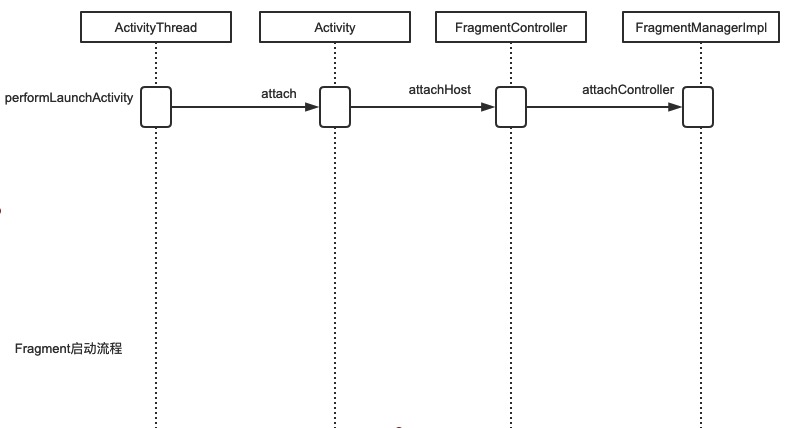1
2
3
4
5
6
7
8
9
10
11
12
13
14
15
16
17
18
19
20
21
22
23
24
25
26
27
28
29
30
31
32
33
34
35
36
37
38
39
40
41
42
43
44
45
46
47
48
49
50
51
52
53
54
55
56
57
58
59
60
61
62
63
64
65
66
67
68
69
70
71
72
73
74
75
76
77
78
79
80
81
82
83
84
85
86
87
88
89
90
91
92
93
94
95
96
97
98
99
100
101
102
103
104
105
106
107
108
109
110
111
112
113
114
115
116
117
118
119
120
121
122
123
124
125
126
127
128
129
130
131
132
133
134
135
136
137
138
139
140
141
142
143
144
145
146
147
148
149
150
151
152
153
154
155
156
157
158
159
160
161
162
163
164
165
166
167
168
169
170
171
172
173
174
175
176
177
178
179
180
181
182
183
184
185
186
187
188
189
190
191
192
193
194
195
196
197
198
199
200
201
202
203
204
205
206
207
208
209
210
211
212
213
214
215
216
217
218
219
220
221
222
223
224
225
226
227
228
229
230
231
232
233
234
235
236
237
238
239
240
241
242
243
244
245
246
247
248
249
250
251
252
253
254
255
256
257
258
259
260
261
262
263
264
265
266
267
268
269
270
271
272
273
274
275
276
277
278
279
280
|
int commitInternal(boolean allowStateLoss) {
if (mCommitted) throw new IllegalStateException("commit already called");
if (FragmentManagerImpl.DEBUG) {
Log.v(TAG, "Commit: " + this);
LogWriter logw = new LogWriter(TAG);
PrintWriter pw = new PrintWriter(logw);
dump(" ", null, pw, null);
pw.close();
}
mCommitted = true;
if (mAddToBackStack) {
mIndex = mManager.allocBackStackIndex(this);
} else {
mIndex = -1;
}
mManager.enqueueAction(this, allowStateLoss);
return mIndex;
}
public void enqueueAction(OpGenerator action, boolean allowStateLoss) {
if (!allowStateLoss) {
checkStateLoss();
}
synchronized (this) {
if (mDestroyed || mHost == null) {
if (allowStateLoss) {
return;
}
throw new IllegalStateException("Activity has been destroyed");
}
if (mPendingActions == null) {
mPendingActions = new ArrayList<>();
}
mPendingActions.add(action);
scheduleCommit();
}
}
void scheduleCommit() {
synchronized (this) {
boolean postponeReady =
mPostponedTransactions != null && !mPostponedTransactions.isEmpty();
boolean pendingReady = mPendingActions != null && mPendingActions.size() == 1;
if (postponeReady || pendingReady) {
mHost.getHandler().removeCallbacks(mExecCommit);
mHost.getHandler().post(mExecCommit);
}
}
}
Runnable mExecCommit = new Runnable() {
@Override
public void run() {
execPendingActions();
}
};
public boolean execPendingActions() {
ensureExecReady(true);
boolean didSomething = false;
while (generateOpsForPendingActions(mTmpRecords, mTmpIsPop)) {
mExecutingActions = true;
try {
removeRedundantOperationsAndExecute(mTmpRecords, mTmpIsPop);
} finally {
cleanupExec();
}
didSomething = true;
}
doPendingDeferredStart();
burpActive();
return didSomething;
}
private boolean generateOpsForPendingActions(ArrayList<BackStackRecord> records,
ArrayList<Boolean> isPop) {
boolean didSomething = false;
synchronized (this) {
if (mPendingActions == null || mPendingActions.size() == 0) {
return false;
}
final int numActions = mPendingActions.size();
for (int i = 0; i < numActions; i++) {
didSomething |= mPendingActions.get(i).generateOps(records, isPop);
}
mPendingActions.clear();
mHost.getHandler().removeCallbacks(mExecCommit);
}
return didSomething;
}
private void removeRedundantOperationsAndExecute(ArrayList<BackStackRecord> records,
ArrayList<Boolean> isRecordPop) {
...
executePostponedTransaction(records, isRecordPop);
...
executeOpsTogether(records, isRecordPop, recordNum, reorderingEnd);
...
}
private void executeOpsTogether(ArrayList<BackStackRecord> records,
ArrayList<Boolean> isRecordPop, int startIndex, int endIndex) {
...
oldPrimaryNav = record.expandOps(mTmpAddedFragments, oldPrimaryNav);
...
executeOps(records, isRecordPop, startIndex, endIndex);
...
record.runOnCommitRunnables();
...
}
Fragment expandOps(ArrayList<Fragment> added, Fragment oldPrimaryNav) {
for (int opNum = 0; opNum < mOps.size(); opNum++) {
final Op op = mOps.get(opNum);
switch (op.cmd) {
case OP_ADD:
case OP_ATTACH:
added.add(op.fragment);
break;
case OP_REMOVE:
case OP_DETACH: {
added.remove(op.fragment);
if (op.fragment == oldPrimaryNav) {
mOps.add(opNum, new Op(OP_UNSET_PRIMARY_NAV, op.fragment));
opNum++;
oldPrimaryNav = null;
}
}
break;
case OP_REPLACE: {
final Fragment f = op.fragment;
final int containerId = f.mContainerId;
boolean alreadyAdded = false;
for (int i = added.size() - 1; i >= 0; i--) {
final Fragment old = added.get(i);
if (old.mContainerId == containerId) {
if (old == f) {
alreadyAdded = true;
} else {
if (old == oldPrimaryNav) {
mOps.add(opNum, new Op(OP_UNSET_PRIMARY_NAV, old));
opNum++;
oldPrimaryNav = null;
}
final Op removeOp = new Op(OP_REMOVE, old);
removeOp.enterAnim = op.enterAnim;
removeOp.popEnterAnim = op.popEnterAnim;
removeOp.exitAnim = op.exitAnim;
removeOp.popExitAnim = op.popExitAnim;
mOps.add(opNum, removeOp);
added.remove(old);
opNum++;
}
}
}
if (alreadyAdded) {
mOps.remove(opNum);
opNum--;
} else {
op.cmd = OP_ADD;
added.add(f);
}
}
break;
case OP_SET_PRIMARY_NAV: {
mOps.add(opNum, new Op(OP_UNSET_PRIMARY_NAV, oldPrimaryNav));
opNum++;
oldPrimaryNav = op.fragment;
}
break;
}
}
return oldPrimaryNav;
}
void executeOps() {
final int numOps = mOps.size();
for (int opNum = 0; opNum < numOps; opNum++) {
final Op op = mOps.get(opNum);
final Fragment f = op.fragment;
if (f != null) {
f.setNextTransition(mTransition, mTransitionStyle);
}
switch (op.cmd) {
case OP_ADD:
f.setNextAnim(op.enterAnim);
mManager.addFragment(f, false);
break;
case OP_REMOVE:
f.setNextAnim(op.exitAnim);
mManager.removeFragment(f);
break;
case OP_HIDE:
f.setNextAnim(op.exitAnim);
mManager.hideFragment(f);
break;
case OP_SHOW:
f.setNextAnim(op.enterAnim);
mManager.showFragment(f);
break;
case OP_DETACH:
f.setNextAnim(op.exitAnim);
mManager.detachFragment(f);
break;
case OP_ATTACH:
f.setNextAnim(op.enterAnim);
mManager.attachFragment(f);
break;
case OP_SET_PRIMARY_NAV:
mManager.setPrimaryNavigationFragment(f);
break;
case OP_UNSET_PRIMARY_NAV:
mManager.setPrimaryNavigationFragment(null);
break;
default:
throw new IllegalArgumentException("Unknown cmd: " + op.cmd);
}
if (!mReorderingAllowed && op.cmd != OP_ADD && f != null) {
mManager.moveFragmentToExpectedState(f);
}
}
if (!mReorderingAllowed) {
mManager.moveToState(mManager.mCurState, true);
}
}
public void addFragment(Fragment fragment, boolean moveToStateNow) {
if (moveToStateNow) {
moveToState(fragment);
}
}
void moveToState(Fragment f, int newState, int transit, int transitionStyle,
boolean keepActive) {
if (f.mState <= newState) {
switch (f.mState) {
case Fragment.INITIALIZING:
...
case Fragment.CREATED:
...
case Fragment.ACTIVITY_CREATED:
...
case Fragment.STARTED:
...
}
} else if (f.mState > newState) {
switch (f.mState) {
case Fragment.RESUMED:
...
case Fragment.STARTED:
...
case Fragment.ACTIVITY_CREATED:
...
case Fragment.CREATED:
...
}
}
}
|


